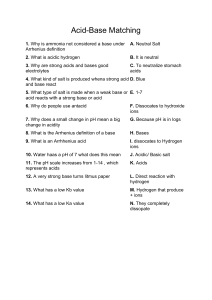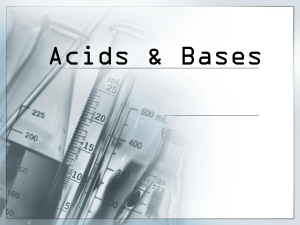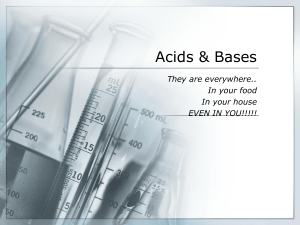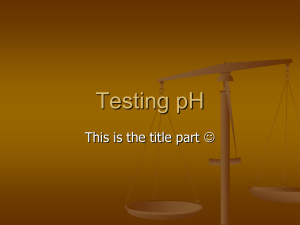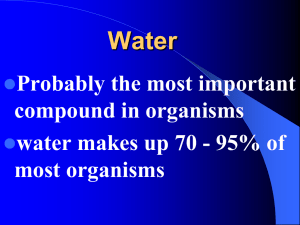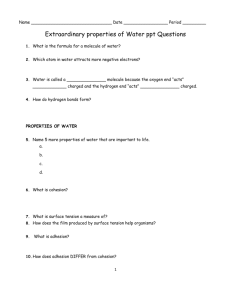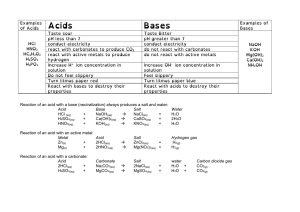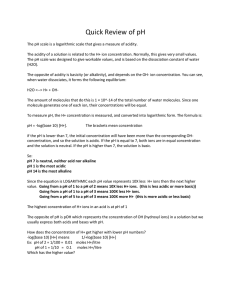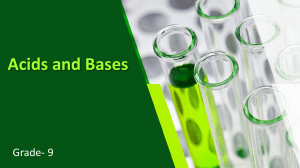Vocabulary: acids, bases, and pH
advertisement
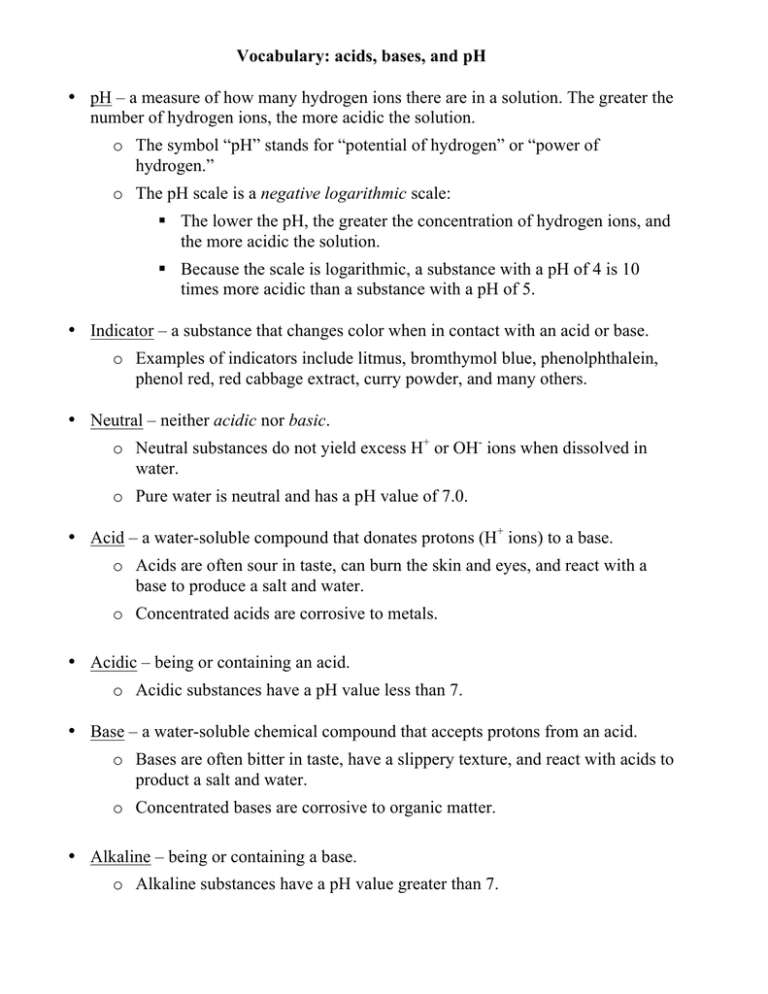
Vocabulary: acids, bases, and pH • pH – a measure of how many hydrogen ions there are in a solution. The greater the number of hydrogen ions, the more acidic the solution. o The symbol “pH” stands for “potential of hydrogen” or “power of hydrogen.” o The pH scale is a negative logarithmic scale: § The lower the pH, the greater the concentration of hydrogen ions, and the more acidic the solution. § Because the scale is logarithmic, a substance with a pH of 4 is 10 times more acidic than a substance with a pH of 5. • Indicator – a substance that changes color when in contact with an acid or base. o Examples of indicators include litmus, bromthymol blue, phenolphthalein, phenol red, red cabbage extract, curry powder, and many others. • Neutral – neither acidic nor basic. o Neutral substances do not yield excess H+ or OH- ions when dissolved in water. o Pure water is neutral and has a pH value of 7.0. • Acid – a water-soluble compound that donates protons (H+ ions) to a base. o Acids are often sour in taste, can burn the skin and eyes, and react with a base to produce a salt and water. o Concentrated acids are corrosive to metals. • Acidic – being or containing an acid. o Acidic substances have a pH value less than 7. • Base – a water-soluble chemical compound that accepts protons from an acid. o Bases are often bitter in taste, have a slippery texture, and react with acids to product a salt and water. o Concentrated bases are corrosive to organic matter. • Alkaline – being or containing a base. o Alkaline substances have a pH value greater than 7.

